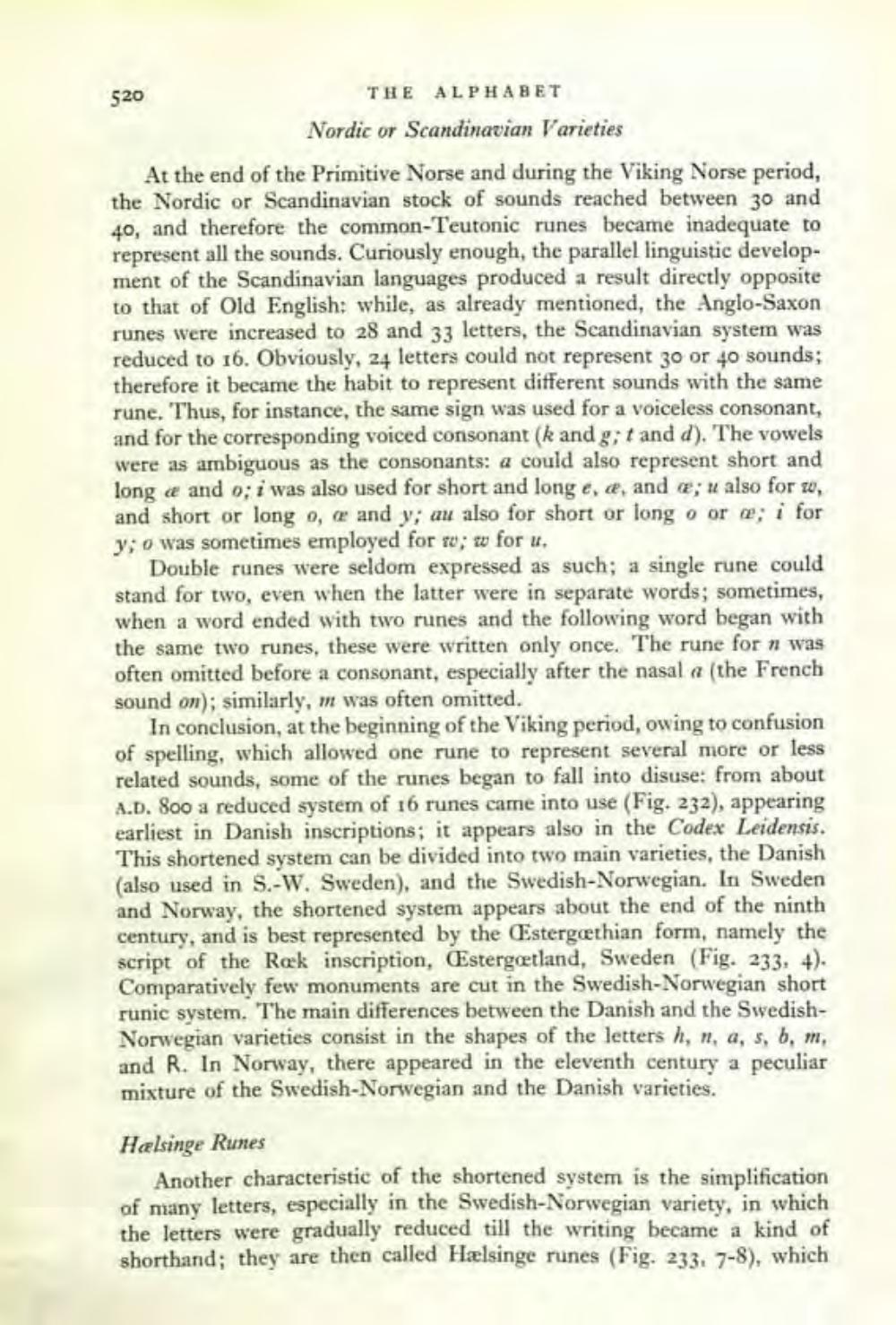________________
520
THE ALPHABET
Nordic or Scandinavian Varieties
At the end of the Primitive Norse and during the Viking Norse period, the Nordic or Scandinavian stock of sounds reached between 30 and 40, and therefore the common-Teutonic runes became inadequate to represent all the sounds. Curiously enough, the parallel linguistic development of the Scandinavian languages produced a result directly opposite to that of Old English: while, as already mentioned, the Anglo-Saxon runes were increased to 28 and 33 letters, the Scandinavian system was reduced to 16. Obviously, 24 letters could not represent 30 or 40 sounds; therefore it became the habit to represent different sounds with the same rune. Thus, for instance, the same sign was used for a voiceless consonant, and for the corresponding voiced consonant (k and g; t and d). The vowels were as ambiguous as the consonants: a could also represent short and long and o; i was also used for short and long e, ce, and e; u also for w, and short or long o, e and y; au also for short or long o or ; i for y; o was sometimes employed for wo; w for u.
Double runes were seldom expressed as such; a single rune could stand for two, even when the latter were in separate words; sometimes, when a word ended with two runes and the following word began with the same two runes, these were written only once. The rune for n was often omitted before a consonant, especially after the nasal a (the French sound on); similarly, m was often omitted.
In conclusion, at the beginning of the Viking period, owing to confusion of spelling, which allowed one rune to represent several more or less related sounds, some of the runes began to fall into disuse: from about A.D. 800 a reduced system of 16 runes came into use (Fig. 232), appearing earliest in Danish inscriptions; it appears also in the Codex Leidensis. This shortened system can be divided into two main varieties, the Danish (also used in S.-W. Sweden), and the Swedish-Norwegian. In Sweden and Norway, the shortened system appears about the end of the ninth century, and is best represented by the Estergoethian form, namely the script of the Rock inscription, Estergotland, Sweden (Fig. 233, 4). Comparatively few monuments are cut in the Swedish-Norwegian short runic system. The main differences between the Danish and the SwedishNorwegian varieties consist in the shapes of the letters h, n, a, s, b, m, and R. In Norway, there appeared in the eleventh century a peculiar mixture of the Swedish-Norwegian and the Danish varieties.
Helsinge Runes
Another characteristic of the shortened system is the simplification of many letters, especially in the Swedish-Norwegian variety, in which the letters were gradually reduced till the writing became a kind of shorthand; they are then called Hælsinge runes (Fig. 233, 7-8), which




